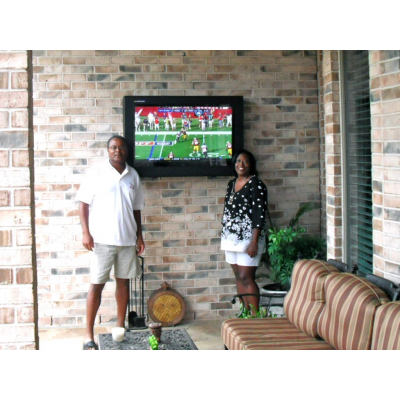
A recently installed Armagard TV with some happy customers.
A PYE television, a TV produced in 1937, was still operating as early as six years ago. Steve Farley, a TV collector, was still using the same television that has shown events such as the assassination of JFK, the moon landing, and Queen Elizabeth’s coronation.
The PYE television uses cathode ray tube (CRT) technology. It’s bulkier and much heavier than modern flat screen LCD or plasma TVs. However, it has a longevity that most modern TVs can’t compete with.
The lifespan of a modern television is measured by its half-life. When the screen fades to half of its brightness, it needs replacing. The half-life of most modern TVs is around five years. While digital signage screens are designed to last longer, the conditions in which they operate in means they often have shorter lifespans than standard, commercial TVs.

An Armagard outdoor TV enclosure protects the TV from extreme weather conditions and damage.
Making an outdoor TV last
The half-life of a TV is determined by its backlight, which usually lasts around 60,000 hours. Because most digital signage applications are left running 24 hours a day, the screens will need replacing after about six years. In outdoor locations, this is reduced even more.
Outdoor digital signage often utilizes high bright screens. A high brightness screen requires more power, therefore reducing the lifespan further. Variable temperatures also mean the screen needs to be replaced more often.
Outdoor digital signage displays are expensive, costing five to ten times the price of an indoor TV. But, by using a protective outdoor enclosure, the cost of replacement is greatly reduced. They can protect any type of screen, even standard. So, while you may want to use a high bright screen, the savings you can make are huge. This means outdoor digital signage enclosures represent a good return on investment.
So, when you’re considering investing in an outdoor TV, it’s essential that you protect it with an outdoor TV enclosure to increase its lifespan.